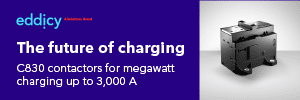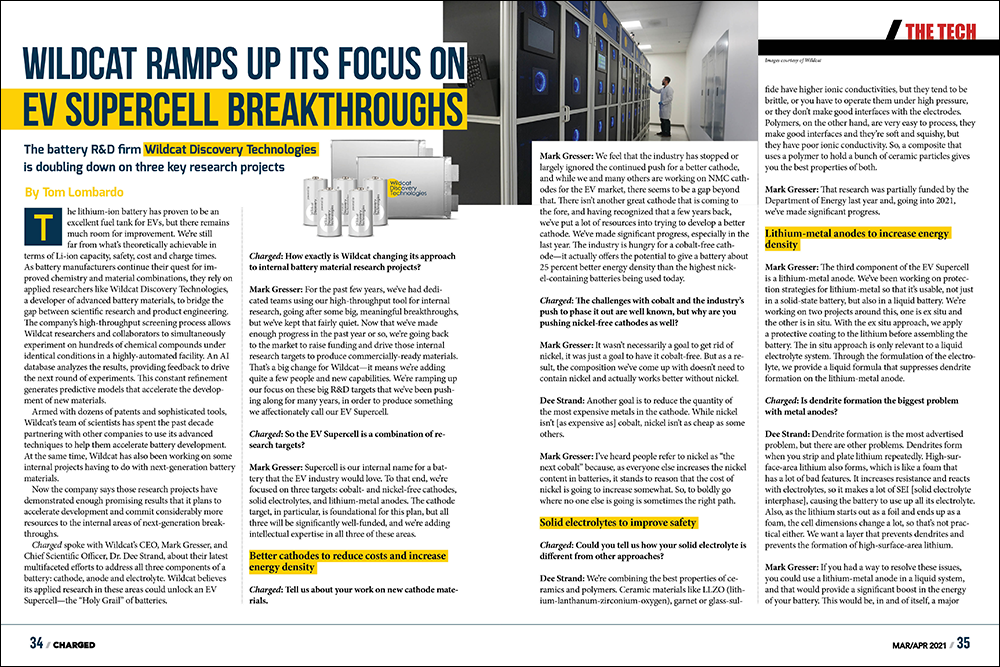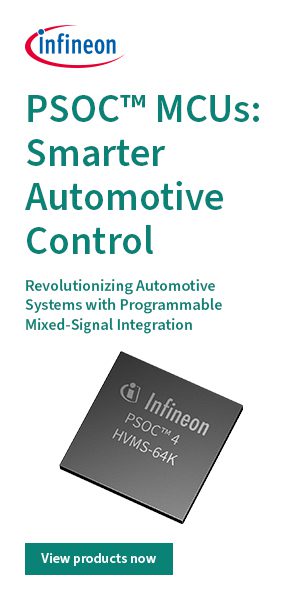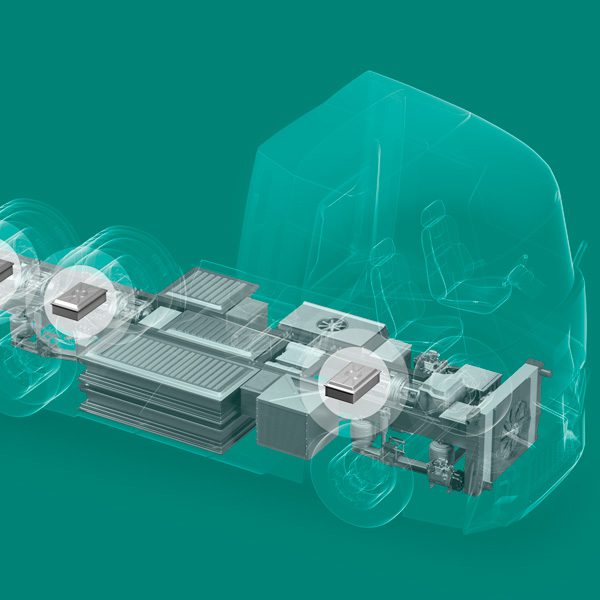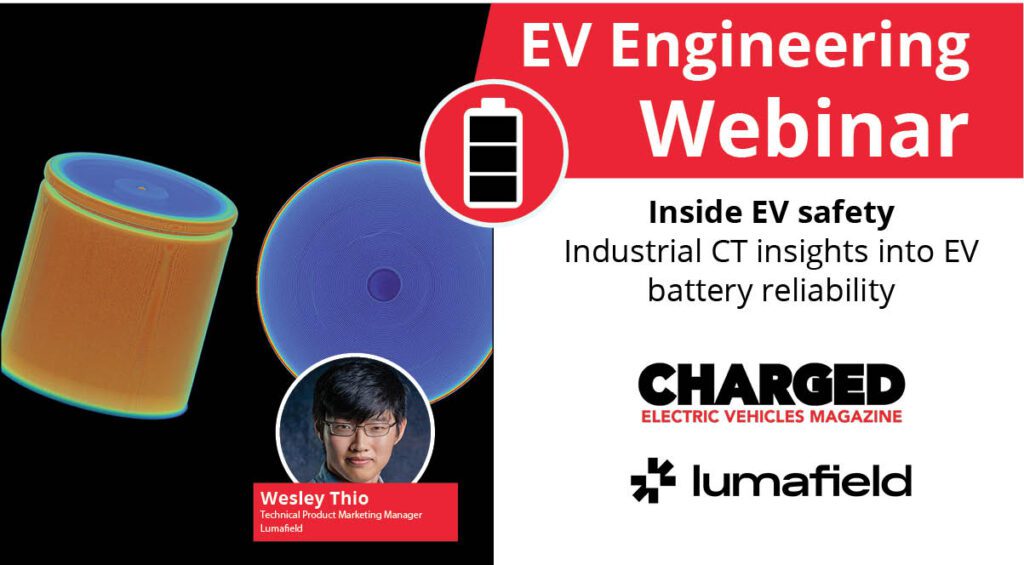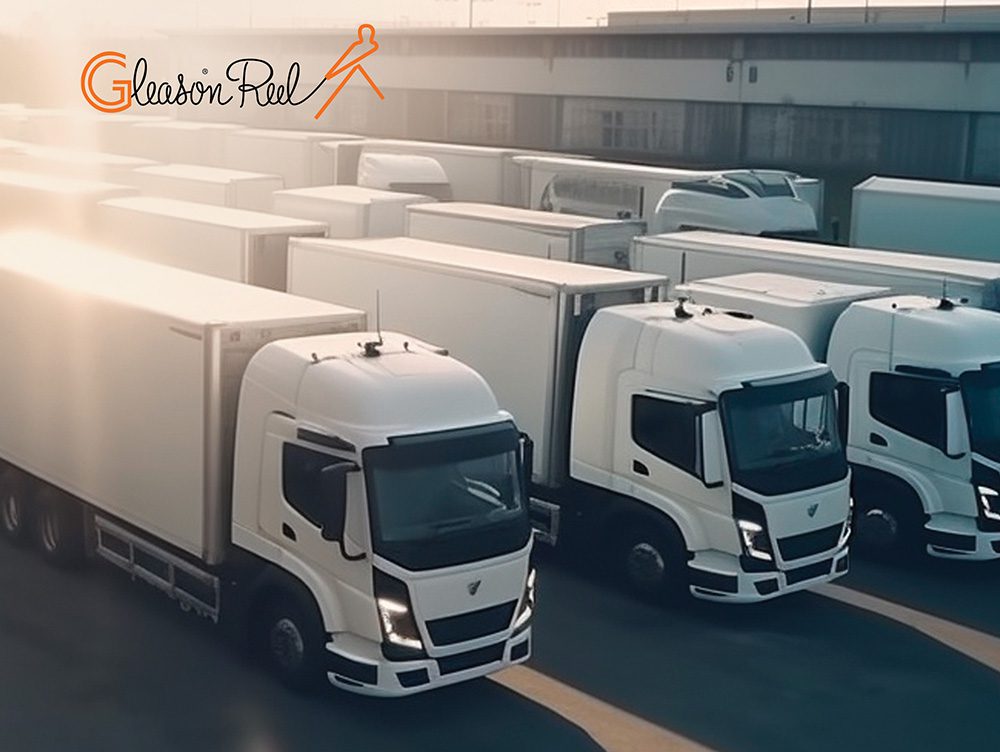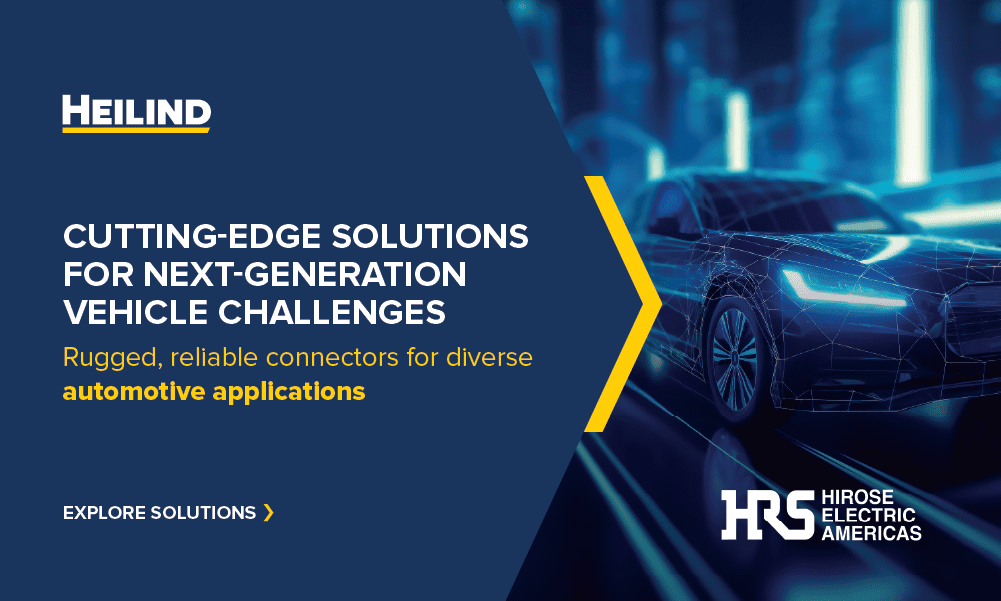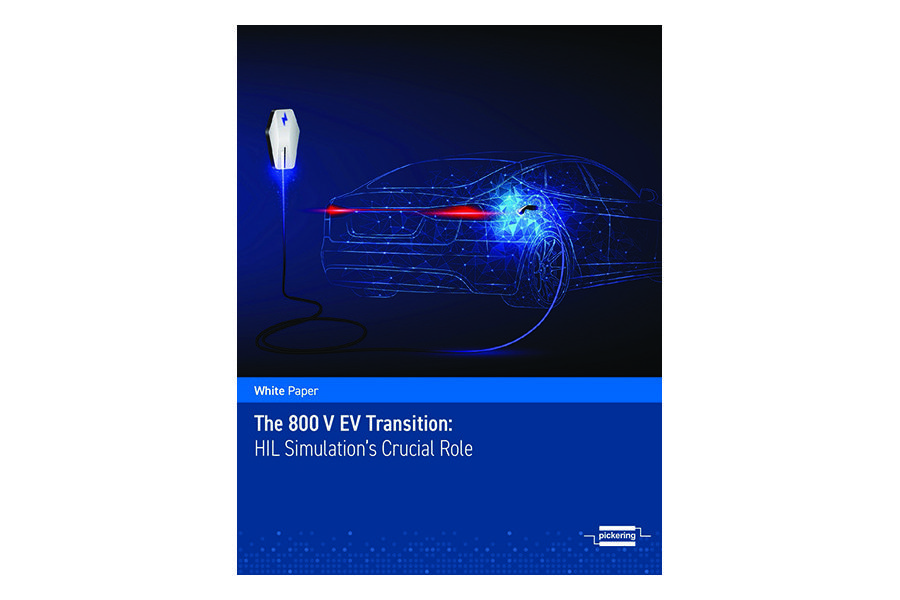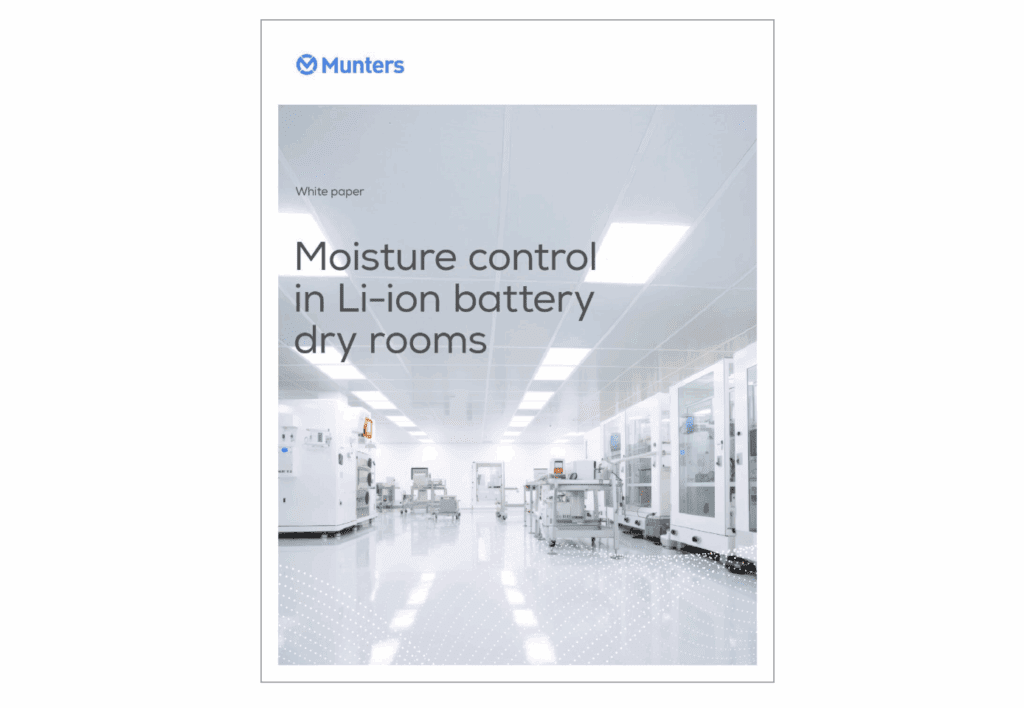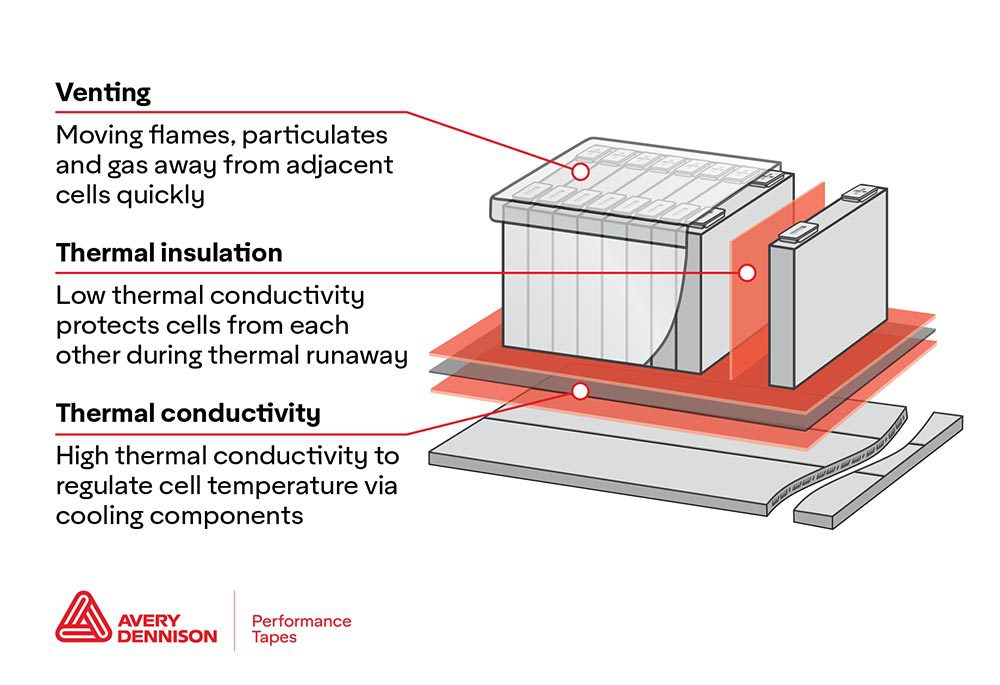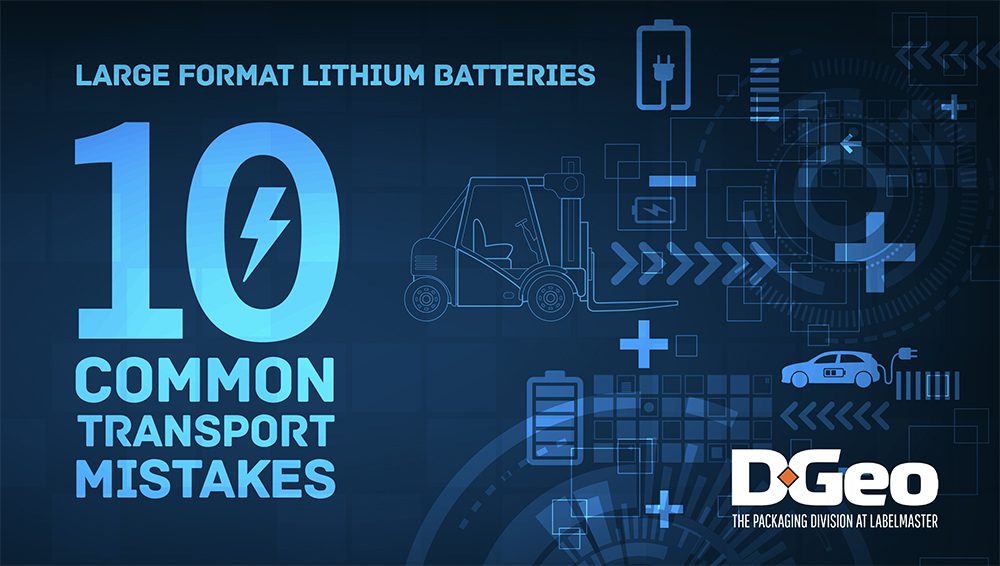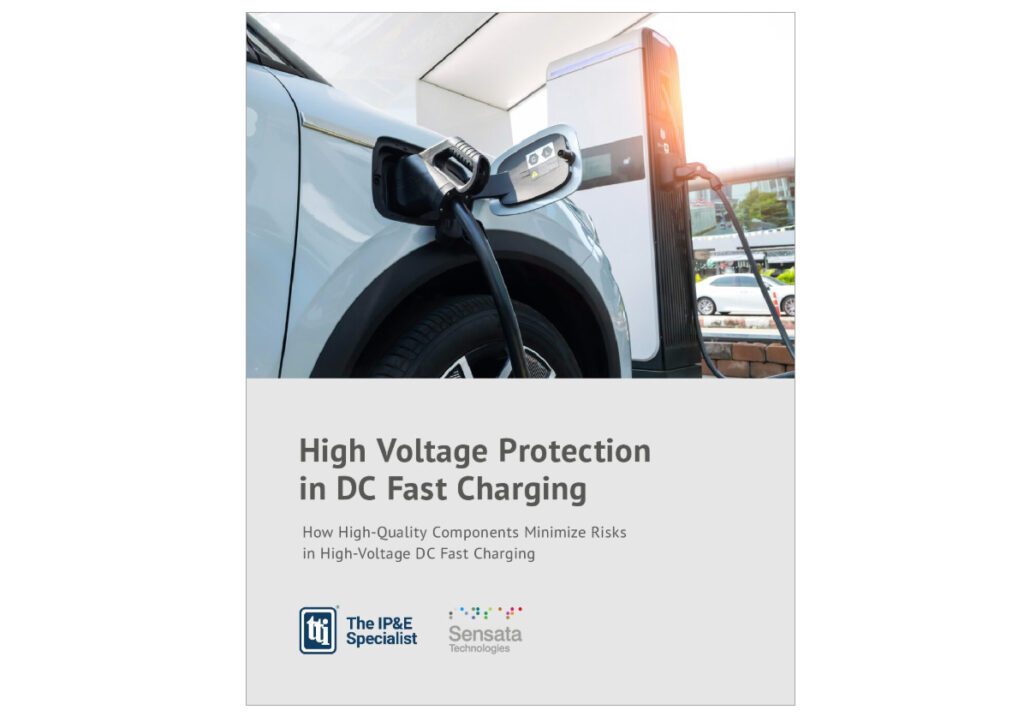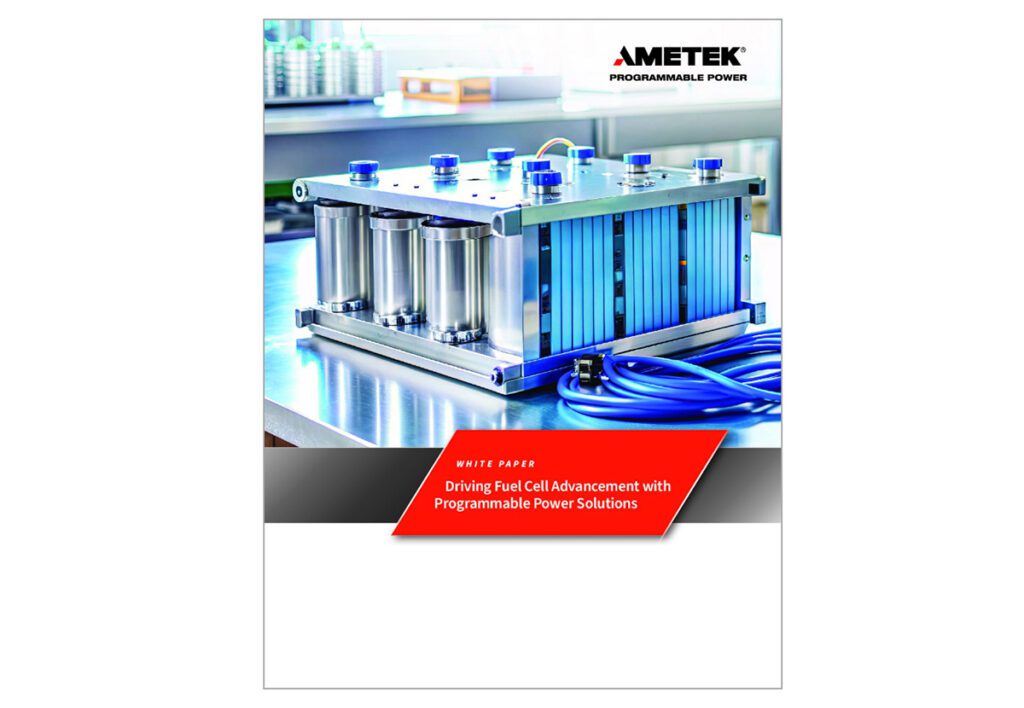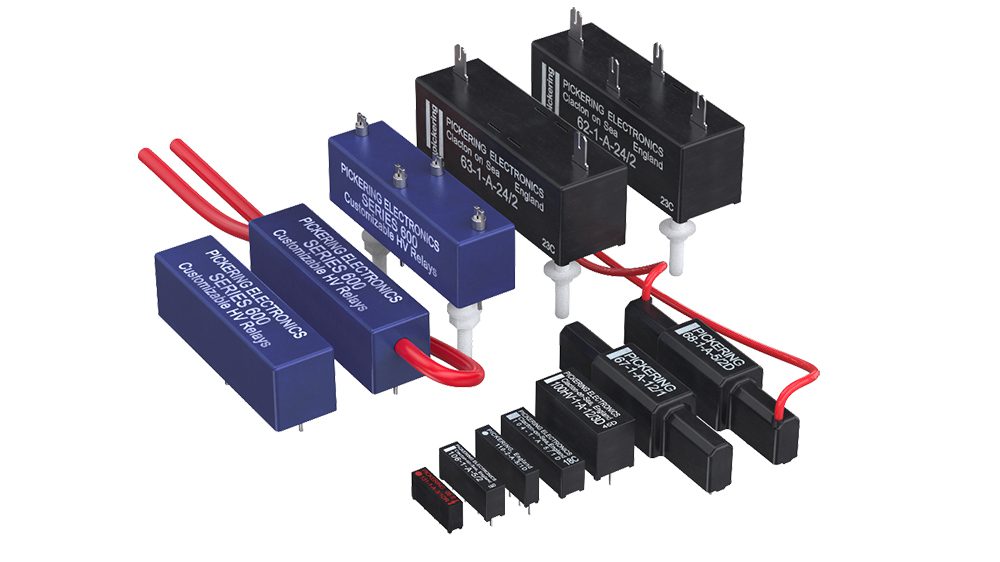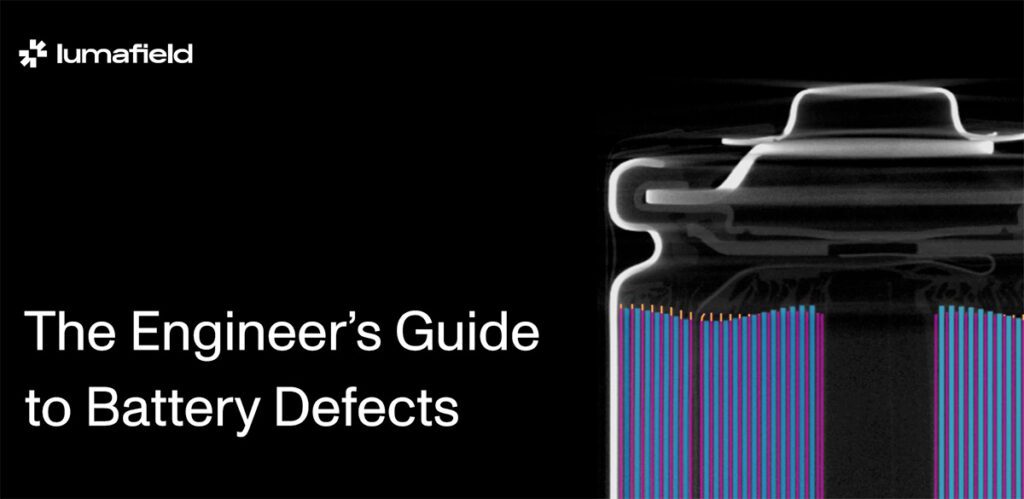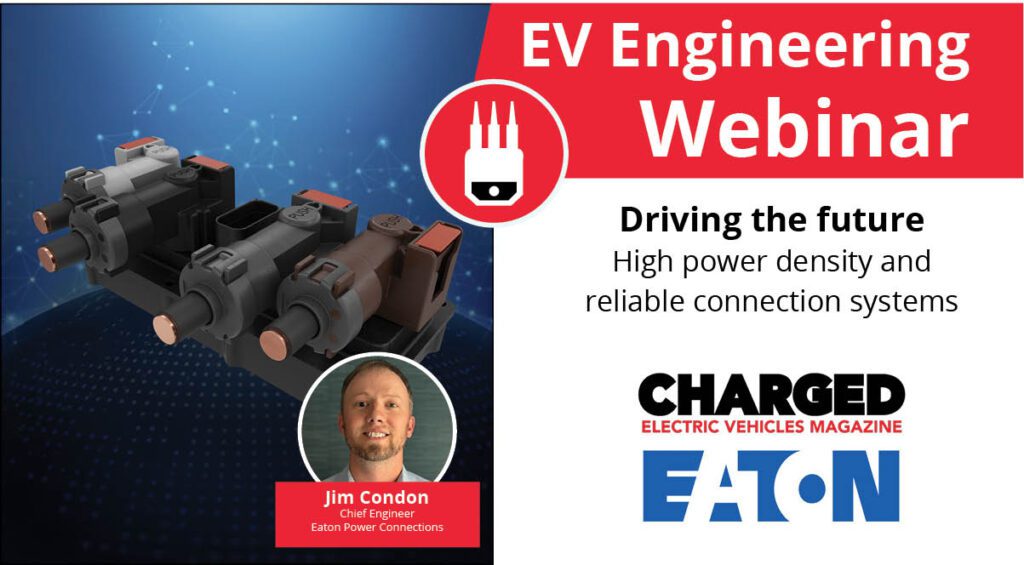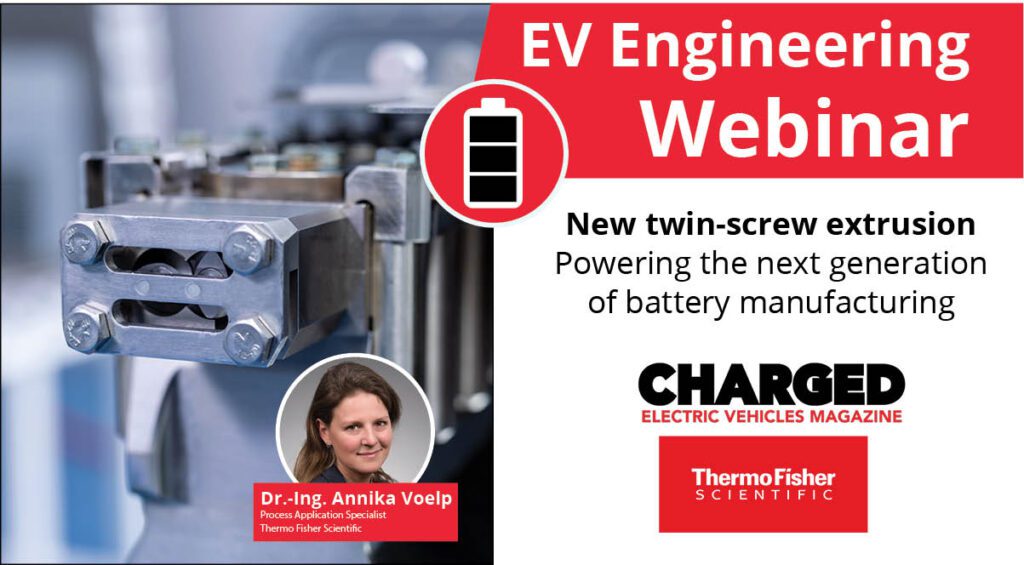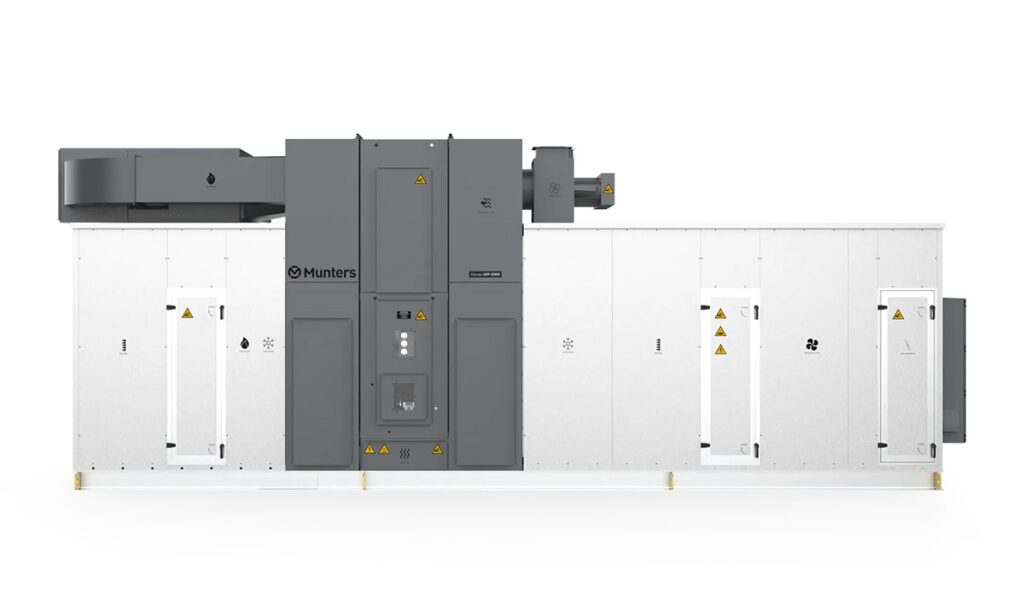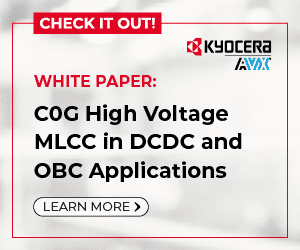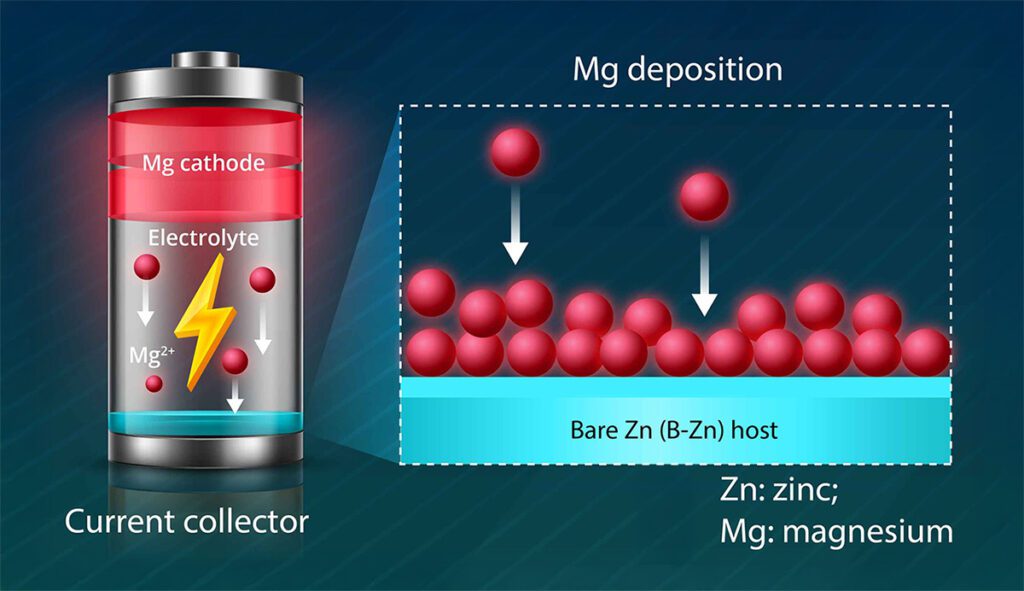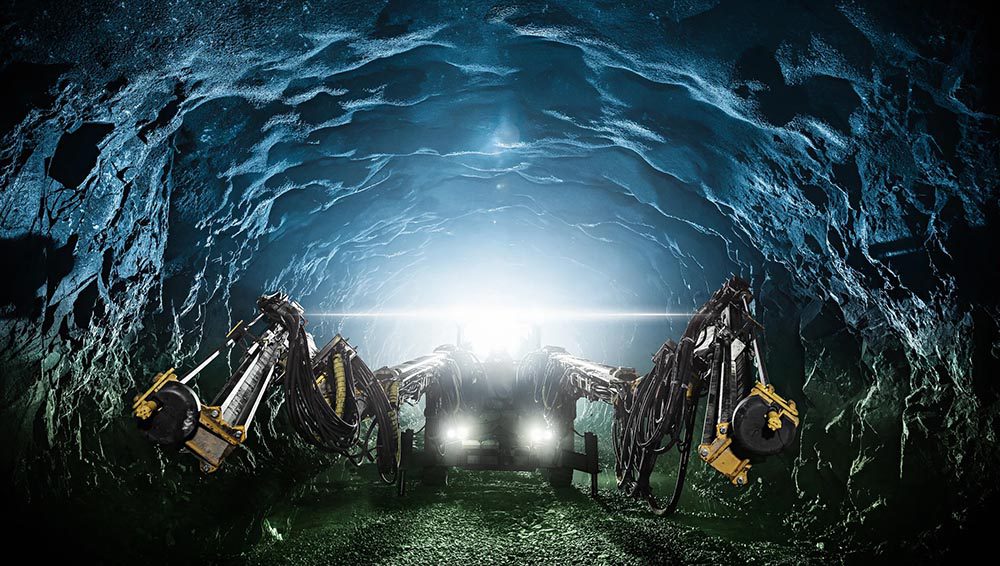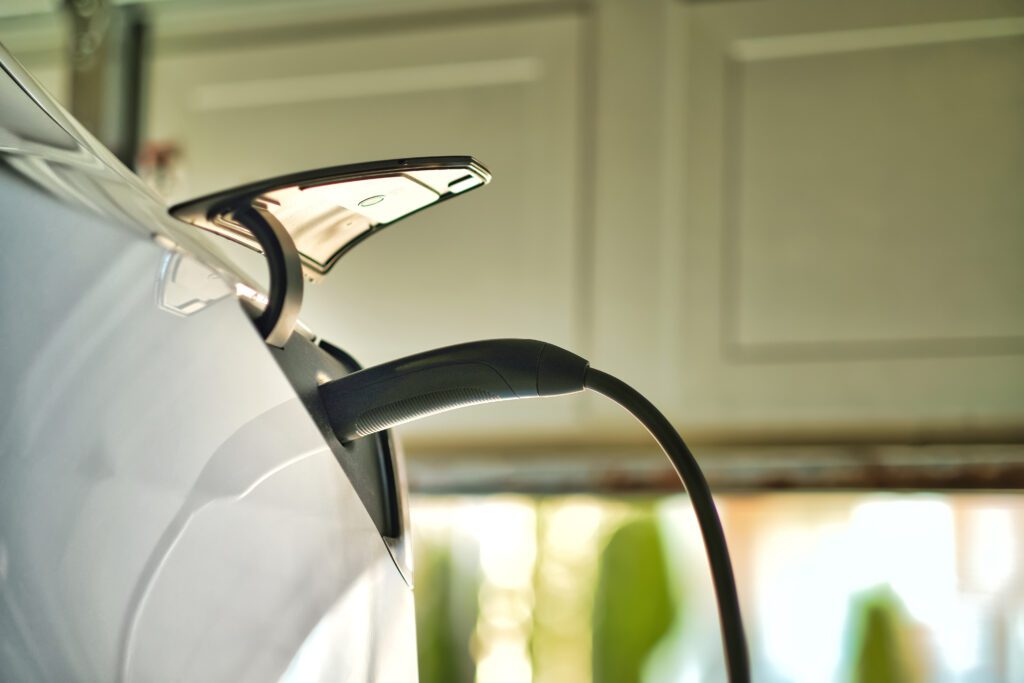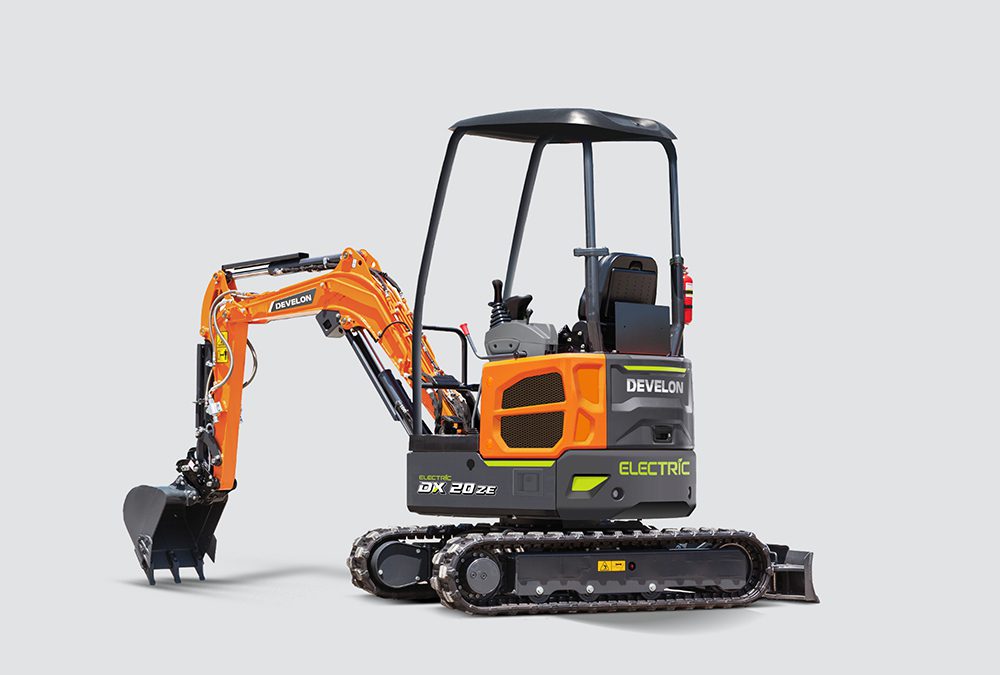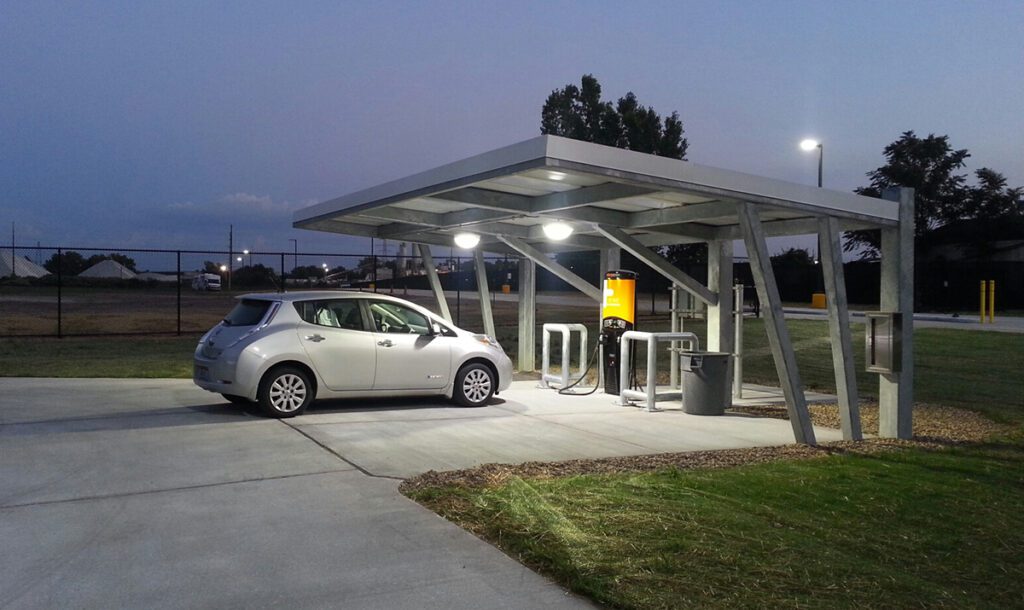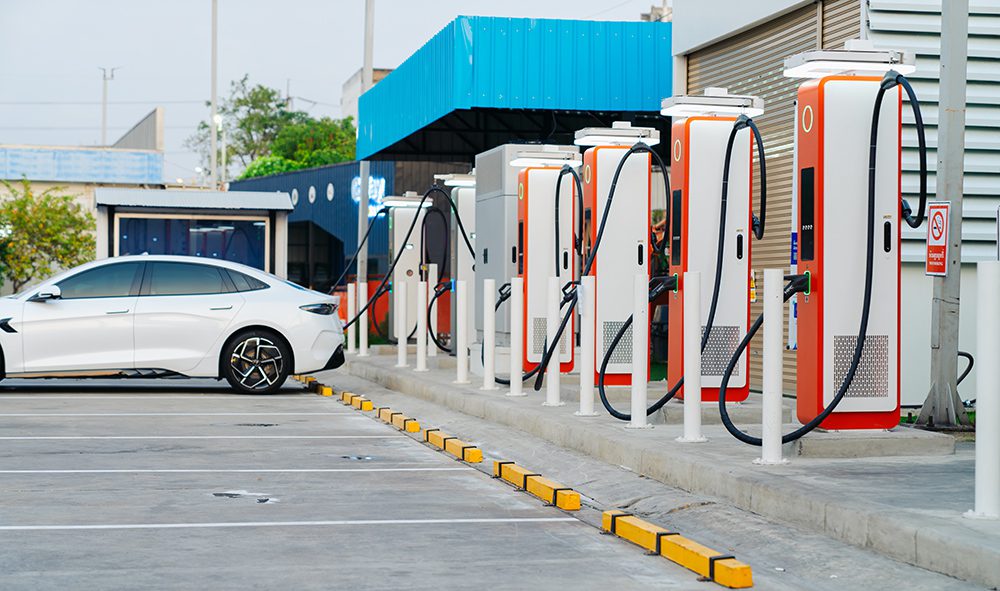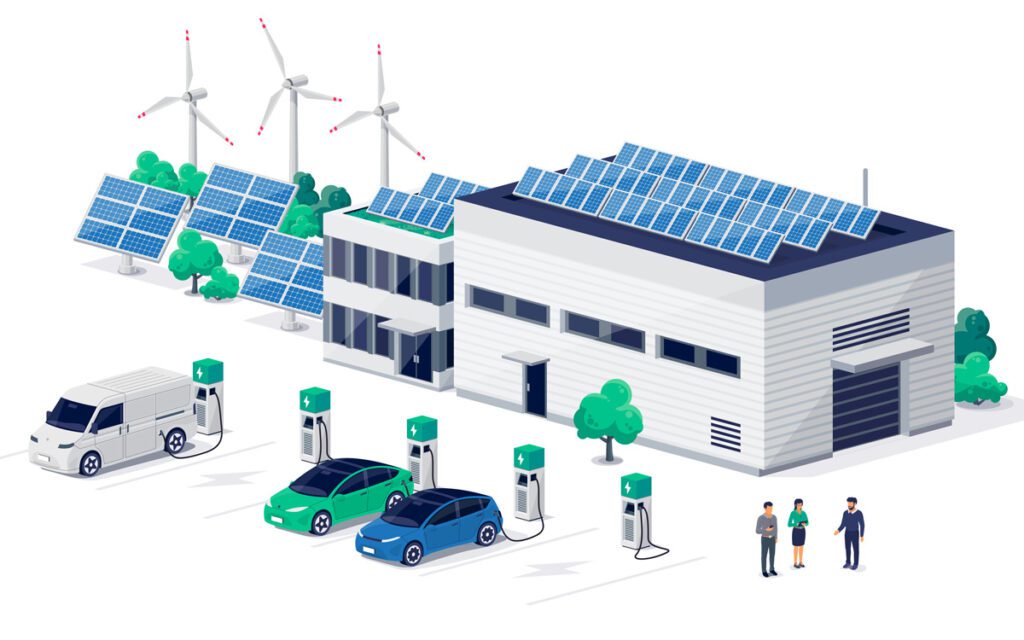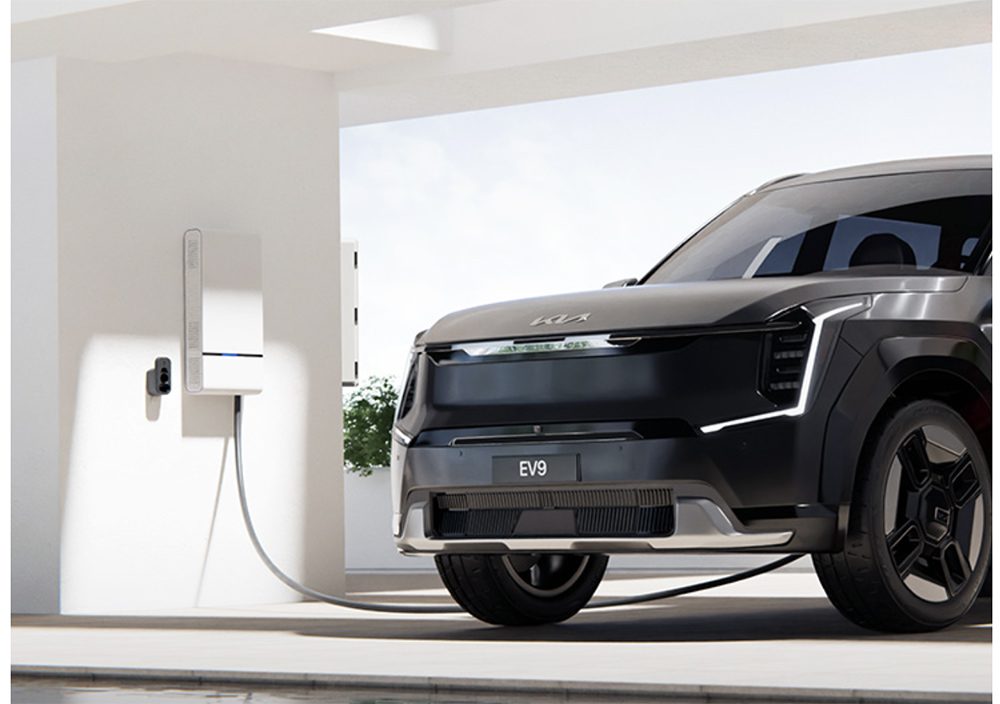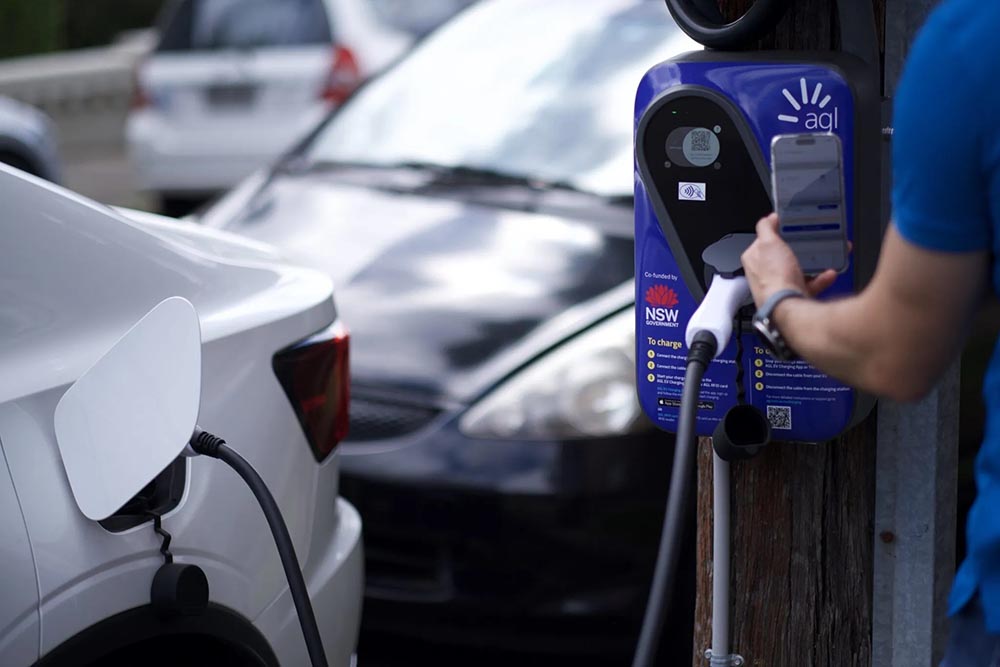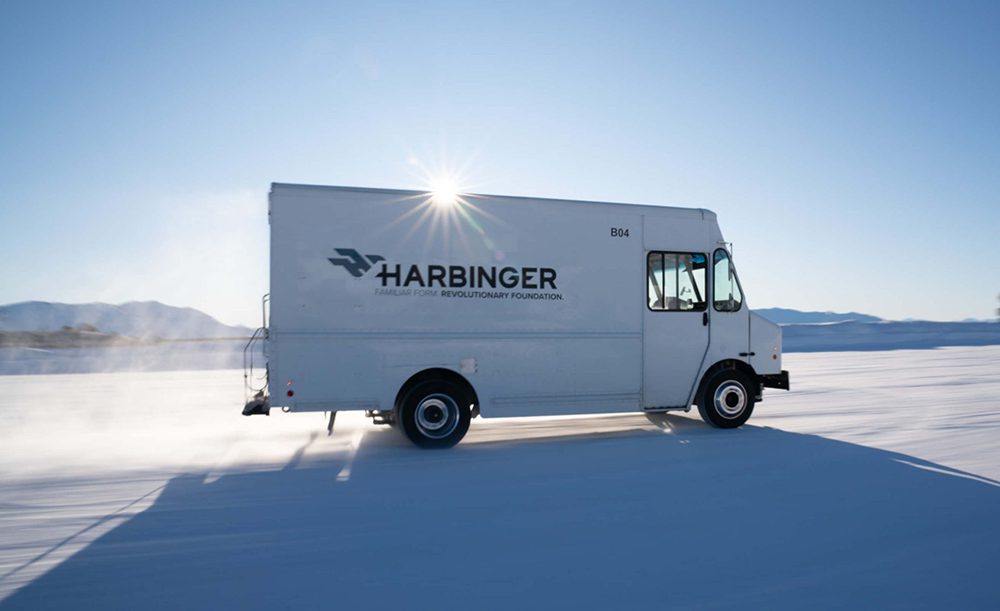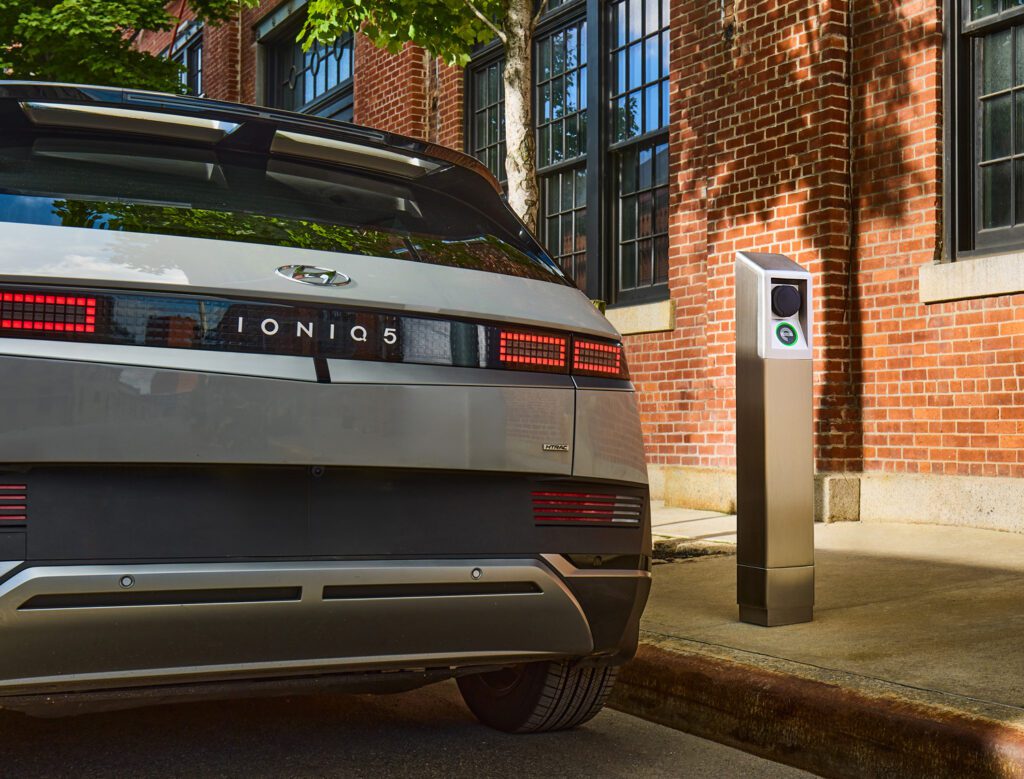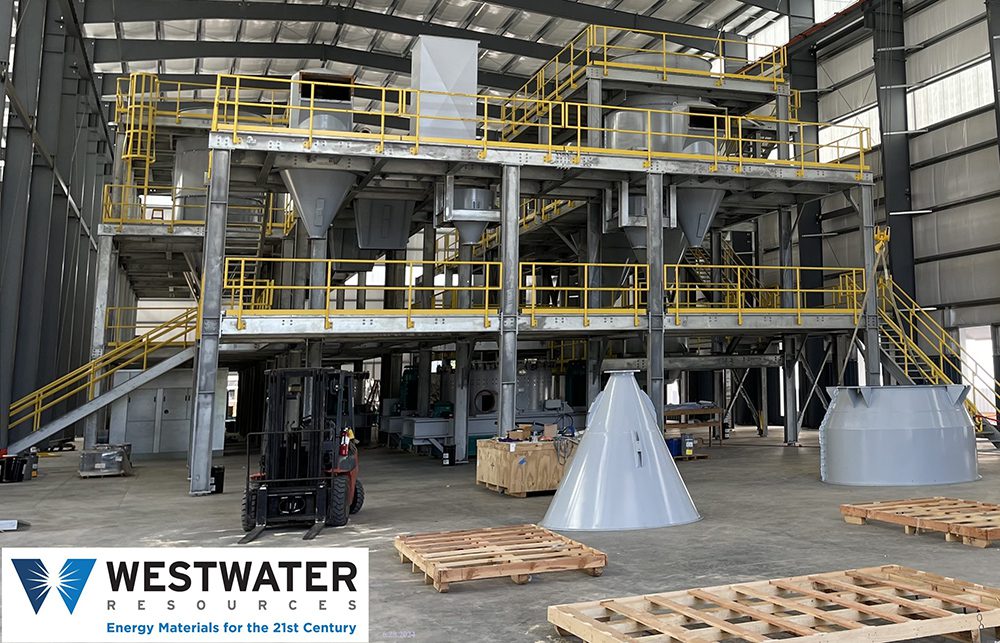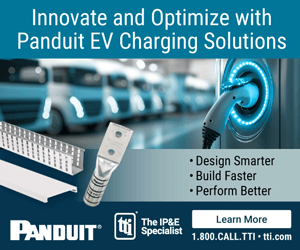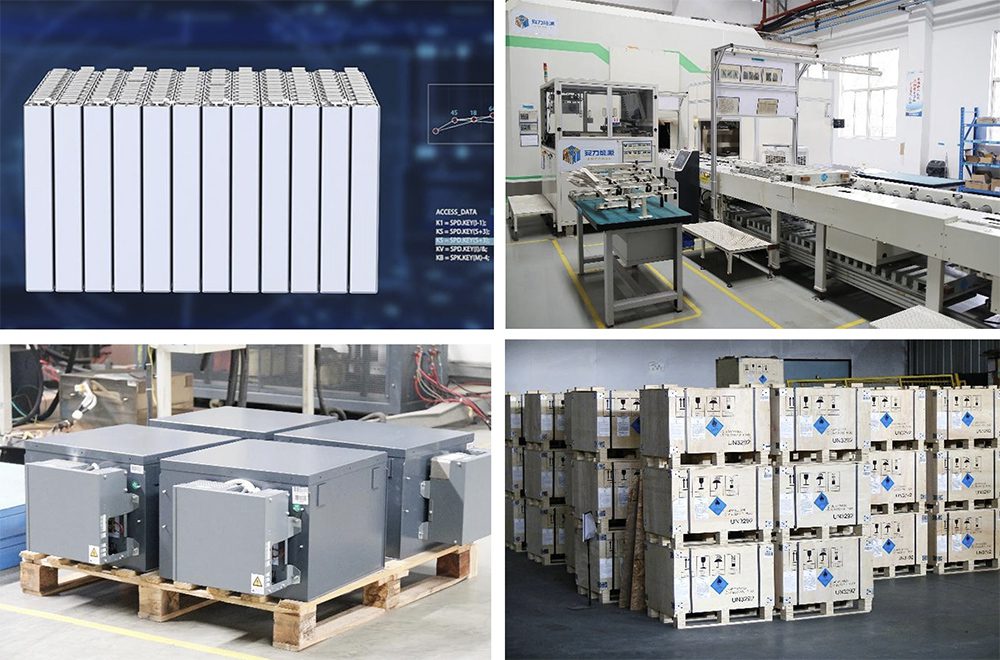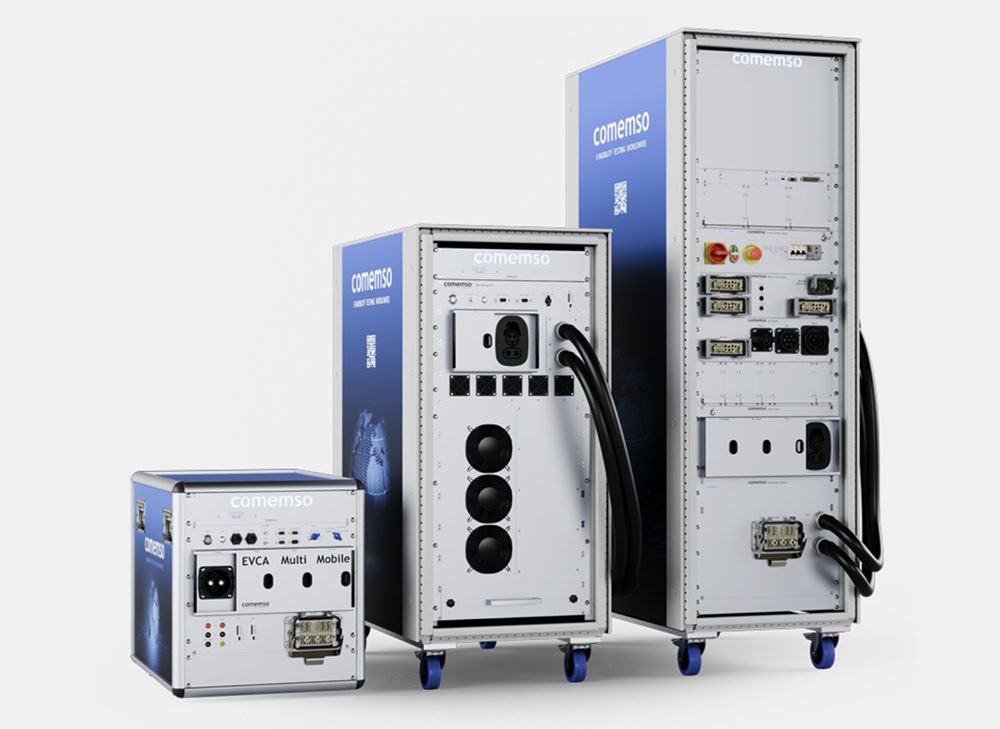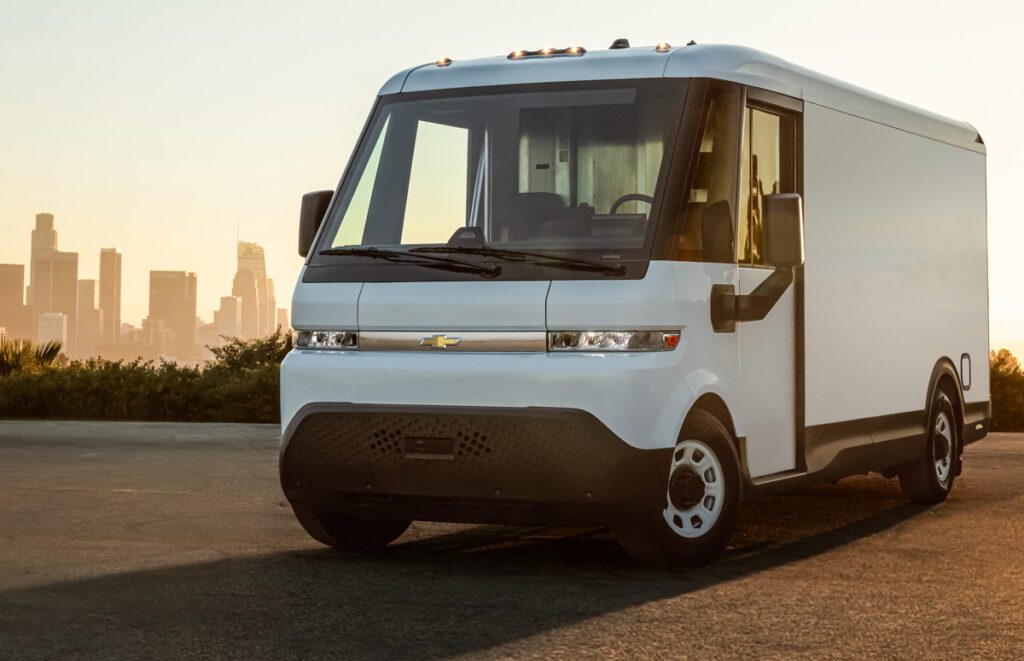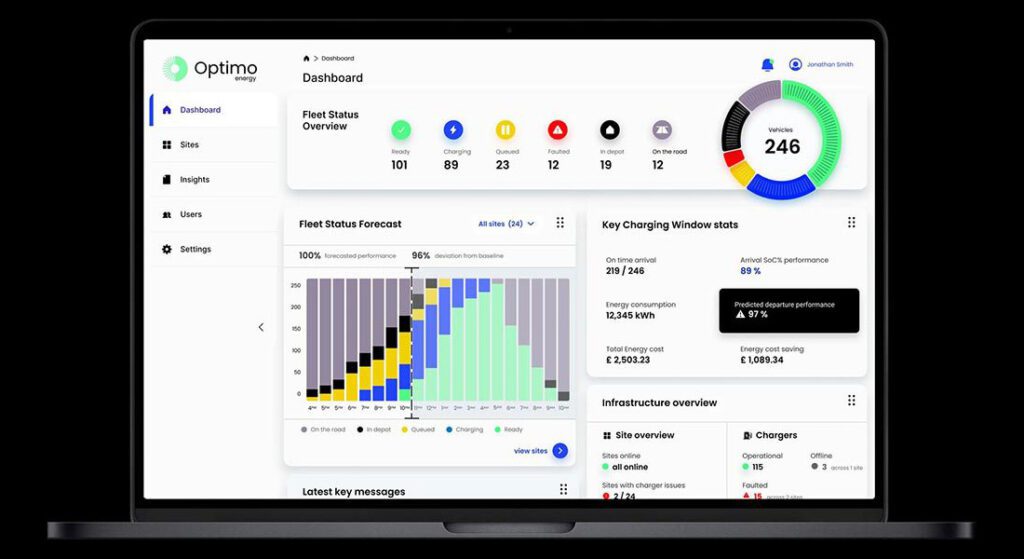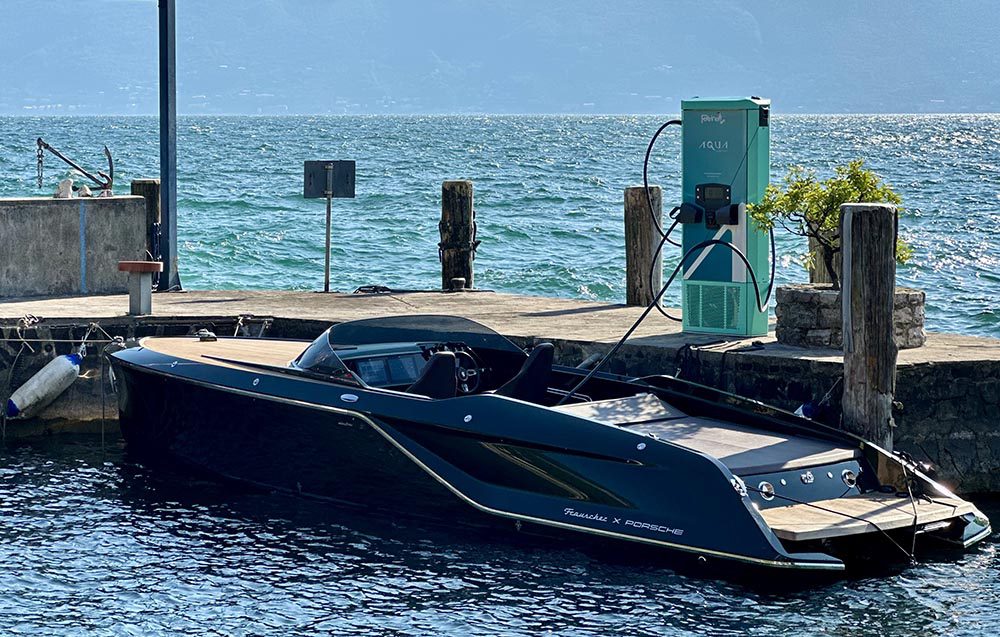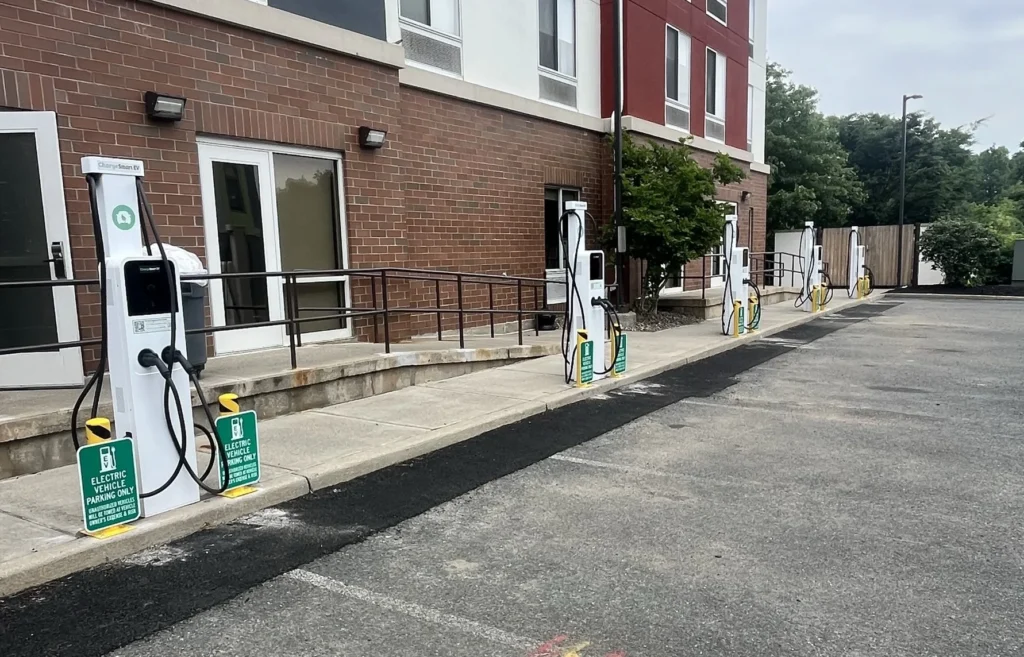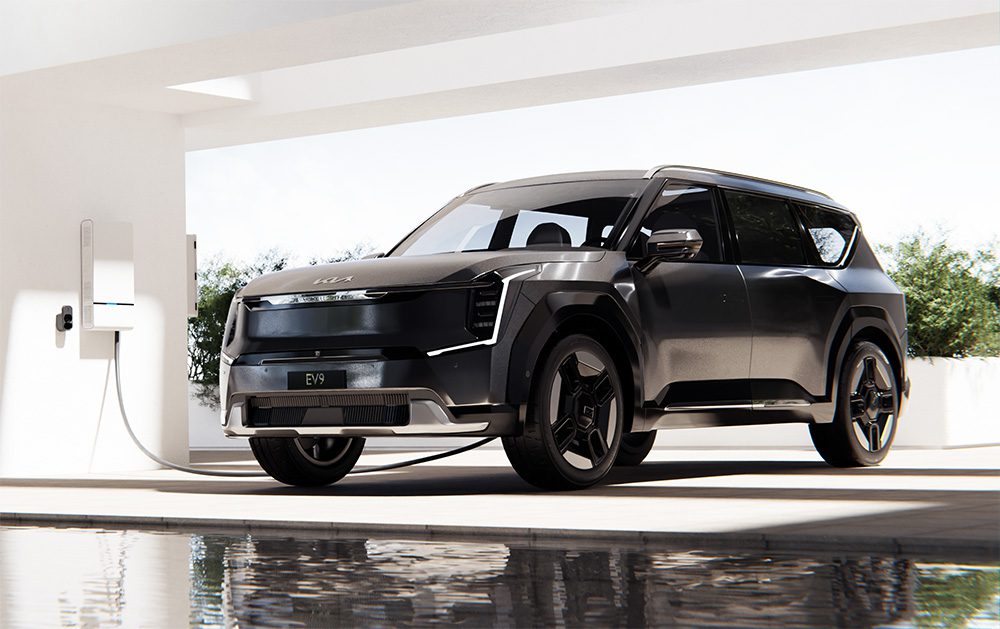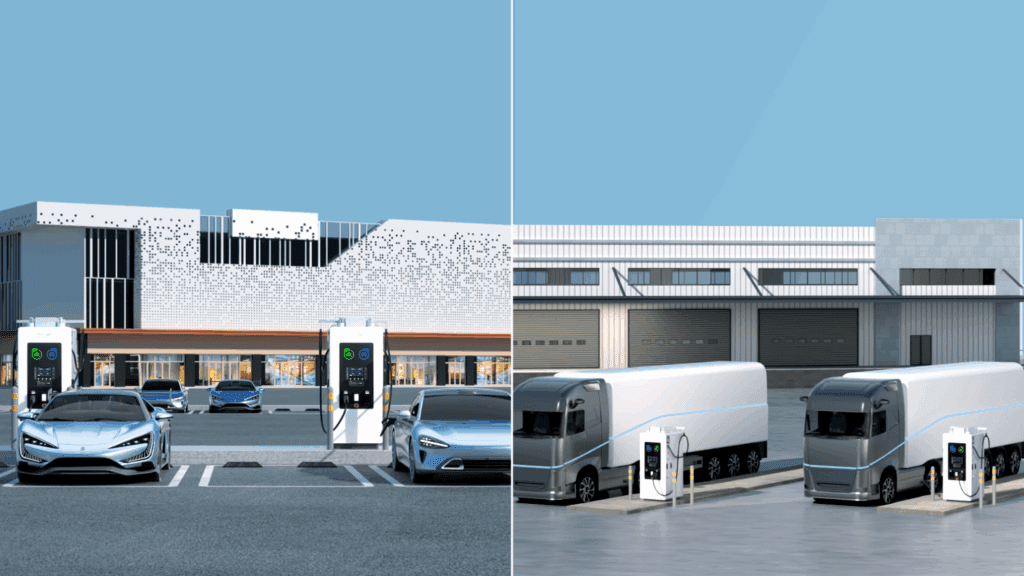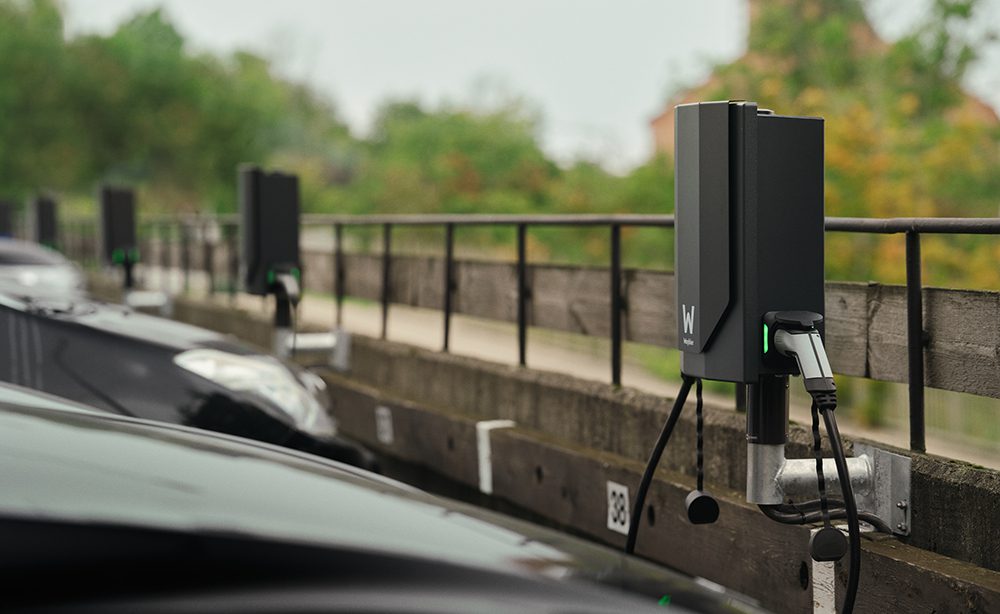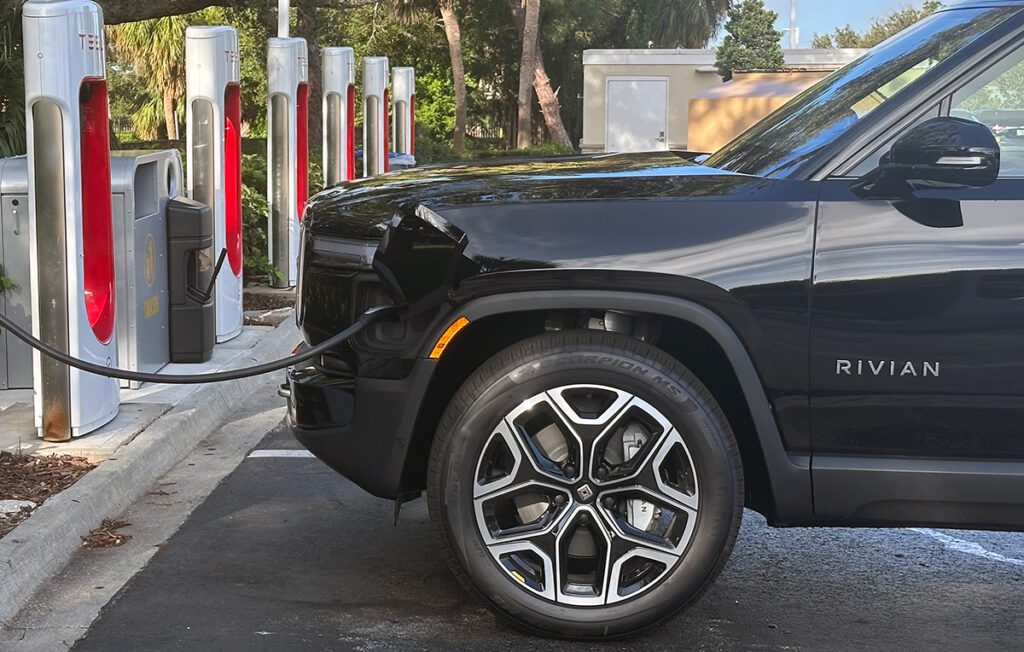The lithium-ion battery has proven to be an excellent fuel tank for EVs, but there remains much room for improvement. We’re still far from what’s theoretically achievable in terms of Li-ion capacity, safety, cost and charge times. As battery manufacturers continue their quest for improved chemistry and material combinations, they rely on applied researchers like Wildcat Discovery Technologies, a developer of advanced battery materials, to bridge the gap between scientific research and product engineering. The company’s high-throughput screening process allows Wildcat researchers and collaborators to simultaneously experiment on hundreds of chemical compounds under identical conditions in a highly-automated facility. An AI database analyzes the results, providing feedback to drive the next round of experiments. This constant refinement generates predictive models that accelerate the development of new materials.
Armed with dozens of patents and sophisticated tools, Wildcat’s team of scientists has spent the past decade partnering with other companies to use its advanced techniques to help them accelerate battery development. At the same time, Wildcat has also been working on some internal projects having to do with next-generation battery materials.
Now the company says those research projects have demonstrated enough promising results that it plans to accelerate development and commit considerably more resources to the internal areas of next-generation breakthroughs.
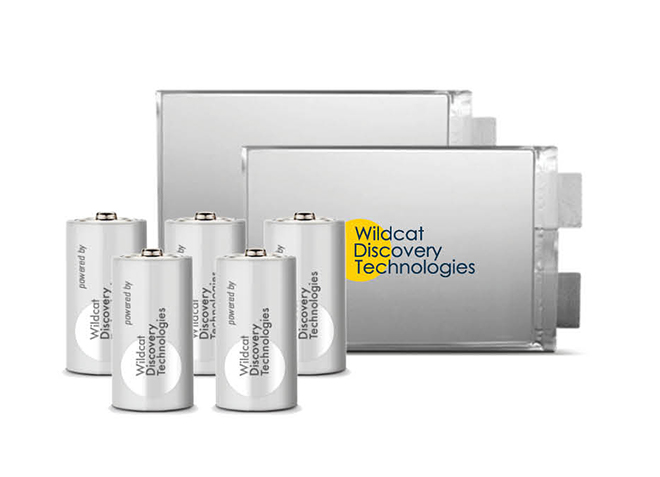
Charged spoke with Wildcat’s CEO, Mark Gresser, and Chief Scientific Officer, Dr. Dee Strand, about their latest multifaceted efforts to address all three components of a battery: cathode, anode and electrolyte. Wildcat believes its applied research in these areas could unlock an EV Supercell—the “Holy Grail” of batteries.
Charged: How exactly is Wildcat changing its approach to internal battery material research projects?
Mark Gresser: For the past few years, we’ve had dedicated teams using our high-throughput tool for internal research, going after some big, meaningful breakthroughs, but we’ve kept that fairly quiet. Now that we’ve made enough progress in the past year or so, we’re going back to the market to raise funding and drive those internal research targets to produce commercially-ready materials. That’s a big change for Wildcat—it means we’re adding quite a few people and new capabilities. We’re ramping up our focus on these big R&D targets that we’ve been pushing along for many years, in order to produce something we affectionately call our EV Supercell.
Charged: So the EV Supercell is a combination of research targets?
Mark Gresser: Supercell is our internal name for a battery that the EV industry would love. To that end, we’re focused on three targets: cobalt- and nickel-free cathodes, solid electrolytes, and lithium-metal anodes. The cathode target, in particular, is foundational for this plan, but all three will be significantly well-funded, and we’re adding intellectual expertise in all three of these areas.
Better cathodes to reduce costs and increase energy density
Charged: Tell us about your work on new cathode materials.
Mark Gresser: We feel that the industry has stopped or largely ignored the continued push for a better cathode, and while we and many others are working on NMC cathodes for the EV market, there seems to be a gap beyond that. There isn’t another great cathode that is coming to the fore, and having recognized that a few years back, we’ve put a lot of resources into trying to develop a better cathode. We’ve made significant progress, especially in the last year. The industry is hungry for a cobalt-free cathode—it actually offers the potential to give a battery about 25 percent better energy density than the highest nickel-containing batteries being used today.
Charged: The challenges with cobalt and the industry’s push to phase it out are well known, but why are you pushing nickel-free cathodes as well?
Mark Gresser: It wasn’t necessarily a goal to get rid of nickel, it was just a goal to have it cobalt-free. But as a result, the composition we’ve come up with doesn’t need to contain nickel and actually works better without nickel.
Dee Strand: Another goal is to reduce the quantity of the most expensive metals in the cathode. While nickel isn’t [as expensive as] cobalt, nickel isn’t as cheap as some others.
Mark Gresser: I’ve heard people refer to nickel as “the next cobalt” because, as everyone else increases the nickel content in batteries, it stands to reason that the cost of nickel is going to increase somewhat. So, to boldly go where no one else is going is sometimes the right path.
Solid electrolytes to improve safety
Charged: Could you tell us how your solid electrolyte is different from other approaches?
Dee Strand: We’re combining the best properties of ceramics and polymers. Ceramic materials like LLZO (lithium-lanthanum-zirconium-oxygen), garnet or glass-sulfide have higher ionic conductivities, but they tend to be brittle, or you have to operate them under high pressure, or they don’t make good interfaces with the electrodes. Polymers, on the other hand, are very easy to process, they make good interfaces and they’re soft and squishy, but they have poor ionic conductivity. So, a composite that uses a polymer to hold a bunch of ceramic particles gives you the best properties of both.
Mark Gresser: That research was partially funded by the Department of Energy last year and, going into 2021, we’ve made significant progress.
Lithium-metal anodes to increase energy density
Mark Gresser: The third component of the EV Supercell is a lithium-metal anode. We’ve been working on protection strategies for lithium-metal so that it’s usable, not just in a solid-state battery, but also in a liquid battery. We’re working on two projects around this, one is ex situ and the other is in situ. With the ex situ approach, we apply a protective coating to the lithium before assembling the battery. The in situ approach is only relevant to a liquid electrolyte system. Through the formulation of the electrolyte, we provide a liquid formula that suppresses dendrite formation on the lithium-metal anode.
Charged: Is dendrite formation the biggest problem with metal anodes?
Dee Strand: Dendrite formation is the most advertised problem, but there are other problems. Dendrites form when you strip and plate lithium repeatedly. High-surface-area lithium also forms, which is like a foam that has a lot of bad features. It increases resistance and reacts with electrolytes, so it makes a lot of SEI [solid electrolyte interphase], causing the battery to use up all its electrolyte. Also, as the lithium starts out as a foil and ends up as a foam, the cell dimensions change a lot, so that’s not practical either. We want a layer that prevents dendrites and prevents the formation of high-surface-area lithium.
Mark Gresser: If you had a way to resolve these issues, you could use a lithium-metal anode in a liquid system, and that would provide a significant boost in the energy of your battery. This would be, in and of itself, a major breakthrough, and you wouldn’t necessarily need an all-solid electrolyte to get to a point where you can use the lithium-metal anode. It’s helpful to get rid of the liquid electrolyte, but on the flip side, it is possible that a lithium-metal anode could still be utilized, and it is being used in some small applications right now.
Charged: So, you could use currently commercialized liquid electrolytes, and not the all-solid electrolytes, which aren’t really commercialized yet?
Mark Gresser: Exactly. Currently, you can replace graphite with lithium-metal, and that battery will have a very high energy density, but it would also be very dangerous. If we can come up with something that eliminates the danger while still using a liquid system, we’d have a very special technology.
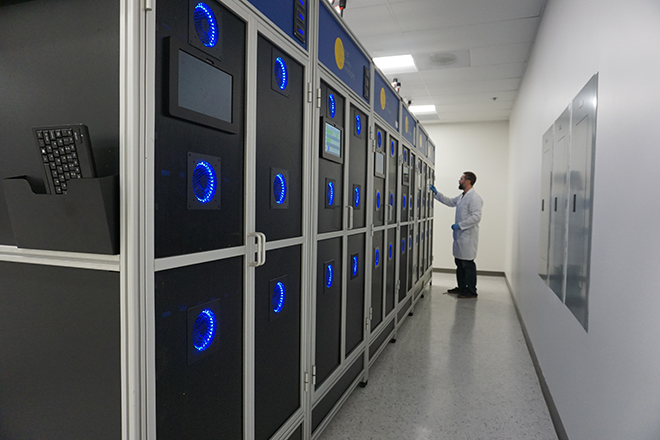
From next-generation batteries to EV Supercells
Charged: How do these three research areas compare to the dozens of other material development projects Wildcat has carried out?
Mark Gresser: Over the years, we’ve worked on many others, but they’re either complementary to these or they’ve been more modest discoveries that are licensable, like electrolyte formulations, for example.
When you get the all-solid-state electrolyte working and you have a safe lithium-metal anode, then you start to get into the Supercell area. And what’s interesting is that our high-capacity cathode material, just by itself, would be a fairly big deal for our industry. That cathode material would be in significant demand across not just the auto industry, but several other industries, and it could be used with today’s battery architecture and today’s battery materials.
It could be used with either a graphite anode or a low-silicon-content anode, which are widely used today. If silicon gets figured out, it could be used with an all-silicon anode, and you’d still get the benefits of having a better cathode. So, this cathode material is foundational for our whole plan, because if that material comes to fruition—and we feel very good about it now—it’s also an enabler for some of these other things, and it still differentiates us all the way through this product roadmap. If someone else solves lithium-metal dendrites and figures out a way to get a lithium-metal anode working without dendrite formation, we can benefit from that with our cathode material, since it’s still better than very high-nickel-containing NMCs. And if we can get the lithium-metal working and combine it with our proprietary cathode material, then that’s even better.
And, to get to this final step, this EV Supercell, most people aren’t talking about a new cathode, they’re talking about a lithium-metal anode, primarily, and a solid electrolyte to block dendrite penetration. As a result of that, our cathode material is another differentiator for us. Either way, we’re going to focus on the three technologies and try to reach the finish line. And we think we have a nice probability of success, given our high-throughput capabilities at Wildcat, which we can bring to bear fully, for the first time in our history, on our own targets.
Charged: You said you’re going to hire new talent. In terms of ramping up, does that mean you’re going to dedicate a lot more channels to your internal staff or build out your capabilities?
Mark Gresser: There’s going to be a huge upswell of people needed to conduct the research, so the first thing we’re going to do is devote the majority of our high-throughput capabilities to this effort. That means we’ll be adding some high-throughput capacity, and we’ll be repositioning the use of the high-throughput directly to these internal targets. The second thing is that we’ll be adding some very topic-specific expertise to the Wildcat team. That’s underway already—more expertise and quite a few more people.
From a capital investment side, we’re also adding more equipment for scaling these materials. Our high-throughput research tends to take place on a very small scale; as we make discoveries, it’s imperative that we scale them up to commercially-viable levels. So, there’s a lot of equipment that we’re planning to add, such as a bigger pouch cell line. We already have a multi-layer pouch cell line, but we’re going to be getting a bigger one. We’re also adding equipment specific to manufacturing composite solid electrolytes on a larger scale and being able to produce large quantities of cathode material.
Charged: Which of these three components would you say is closest to commercialization?
Mark Gresser: We believe that the cathode material is likely to be commercially ready ahead of the others. That’s good, because it also means that the cathode material doesn’t need anything else to get monetized, it just needs some more development to perform a little better than it’s performing right now.
Dee Strand: It also depends on what application you’re talking about for commercializing. The cathode could be ready for some initial applications before the other two, because what limits the cathode performance is cycle life. So, when you develop a new cathode, it might cycle a few hundred times, and then you have to work to make it suitable for automotive targets. The other components—the solid electrolyte and the lithium-metal—are a little more pass-or-fail on whether they’re good enough to commercialize.
Strategic partnerships
Gresser also told us that Wildcat is seeking out new strategic partners and collaborators in industries all the way up the supply chain, from cathode makers to cell makers to automotive manufacturers. These could be scale partners or customers looking to purchase Wildcat’s materials to use in their own products.
This article appeared in Charged Issue 54 – March/April 2021 – Subscribe now.



